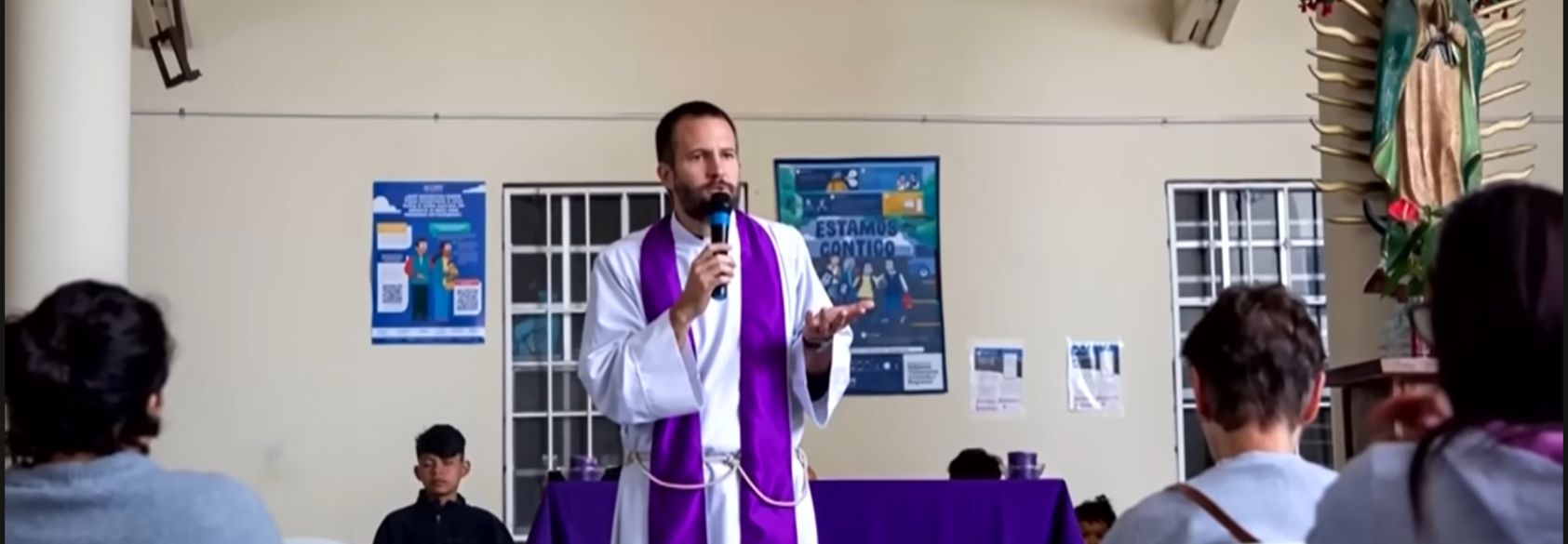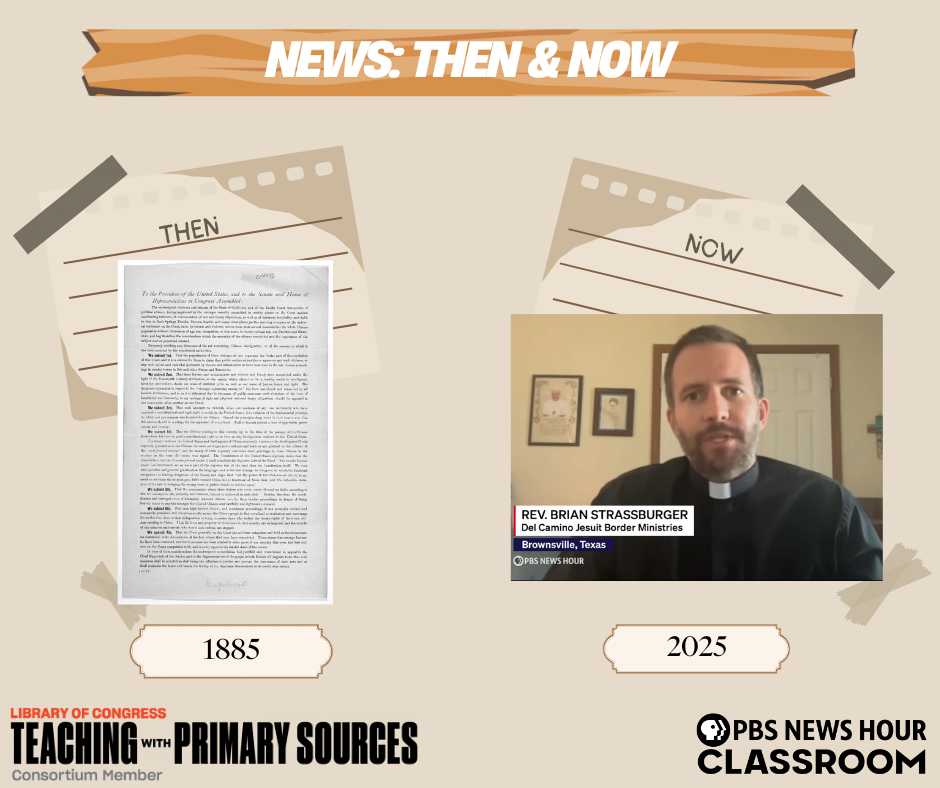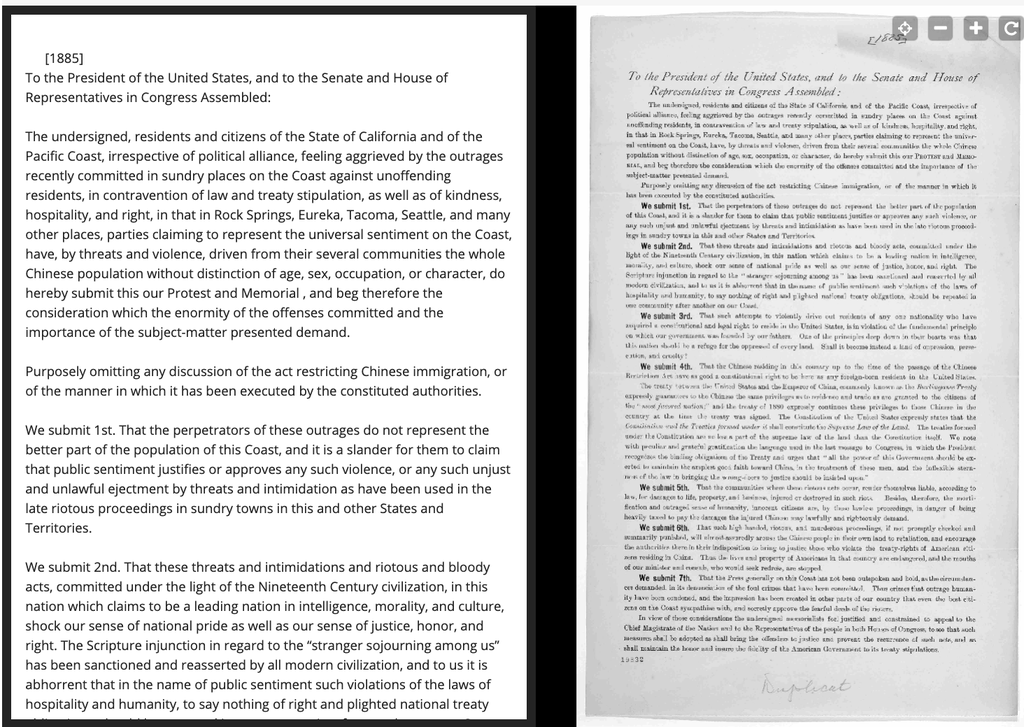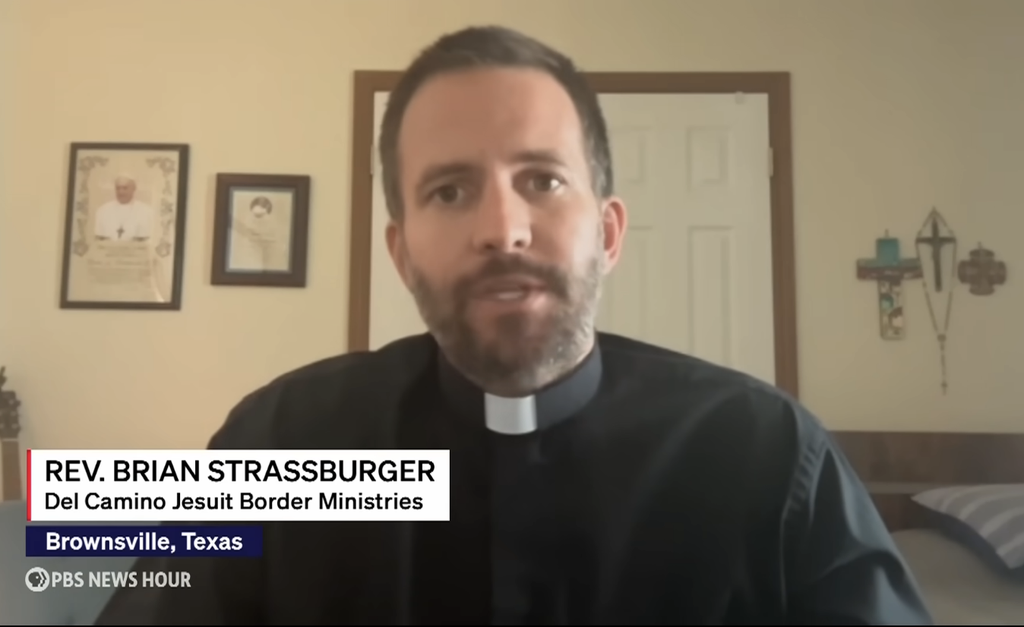Jesuit Priest Describes Seeing ICE Agents Target Migrants at Immigration Court
A Jesuit priest shares what he saw ICE agents do outside immigration court. Analyze civil rights and ethics in this lesson.

What would you do if you witnessed immigration enforcement targeting vulnerable people outside a courthouse?
Share
August 14, 2025
A Jesuit priest shares what he saw ICE agents do outside immigration court. Analyze civil rights and ethics in this lesson.
Share
The Trump administration has made sweeping changes to the country’s immigration system. In recent months, ICE agents have been arresting migrants outside courtrooms and courthouses. William Brangham spoke with Father Brian Strassberger, a Jesuit Priest who serves migrants on both sides of the border, about what he saw at an immigration court hearing in Harlingen, Texas.
View the transcript of the story.
Watch this video about ICE and discuss:

Using this News: Then & Now activity, based on News Hour's Journalism in Action website, a project supported by the Library of Congress, students are asked to compare news events from the past to today.
In this broadside or leaflet distributed to the public in 1885, titled "To the president of the United States, and to the Senate and House of Representatives in Congress assembled [Protest against ill-treatment of the Chinese. s. l., 1885]," protesters in 1885 urged the U.S. government to stop violence against Chinese people.
The protests stemmed from passage of the Chinese Exclusion Act of 1882. It was the first major law restricting immigration into the U.S., extended by the Geary Act in 1892.

In this screenshot from a PBS News Hour broadcast titled "Jesuit priest describes seeing ICE agents target migrants at immigration court," immigration rights' advocates argue for due process under the Fifth and Fourteenth Amendments of the U.S. Constitution, which states the government shall not “deprive any person of life, liberty, or property without due process of law.”
Due process includes providing the person with an opportunity to be heard in court and an explanation as to why they are being detained.

Using the Then & Now comparison, how have immigrants and supporters argued for their rights throughout history? In what ways have these arguments evolved over time, and in what ways have they remained the same?
Written by Payton Alfieri, PBS News Hour Classroom's intern and senior at Episcopal High School, and News Hour's Vic Pasquantonio.
Explore dozens of rich, engaging resources to teach about immigration policy, history, and awareness with preK-12 students.
Republished with permission from PBS News Hour Classroom.
